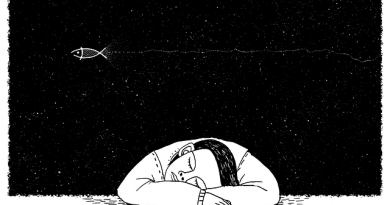Scientists Discover That Suicide Significantly Increases on the Full Moon
Scientists Discover That Suicide Significantly Increases on the Full Moon.The rising full moon has long had a strange connection to bizarre and mysterious events, and now scientists say they may have found an answer.
The new study from researchers at Indiana University shows that suicide significantly increases on the full moon.
They looked at data from the Marion County coroner’s office in Indiana that showed an increase in deaths by suicide during the week of a full moon, and even more for people over age 55.
They also looked at the time of day and months, finding that suicides peak between 3 to 4 p.m. and in the month of September.
What Are the Biomarkers for Suicide?
Suicide is a serious mental health issue that affects many people around the world. It can be caused by a number of factors, including mood disorders, eating disorders, substance use and psychiatric illnesses.
Researchers are now trying to find out more about what causes suicide in order to prevent it. In particular, scientists have found that people who commit suicide are more likely to do so at 3 p.m.
This is because ambient light can disrupt the body’s natural circadian rhythm, which regulates sleep and waking cycles. In addition to this, many people are more likely to take their own lives when they’re feeling stressed out or depressed.
Research has also shown that people who have been diagnosed with a psychiatric disorder are more likely to commit suicide. For example, those who have schizophrenia often hear voices telling them to kill themselves. Other factors that increase the risk of suicide include depression, bipolar disorder and drug abuse.
Why Are People More Likely to Commit Suicide at 3 p.m.?
Scientists Discover That Suicide Significantly Increases on the Full Moon
To determine whether a seasonal effect exists for suicide risk, the authors of this study collected time-of-death data for 35,338 suicides between 2003 and 2010 from the National Violent Death Reporting System.
They then used negative binomial modeling to generate hourly incidence risk ratios for each time of day and month.
The results showed that the risk of suicide was highest at night across all months. The risk did not differ significantly across months, but did vary by time of day (Figure 1).
This is in accordance with research that suggests nocturnal wakefulness increases suicidality17. Moreover, sleep deprivation is associated with reduced frontal cortical connectivity and impaired cognition, which can impair decision-making and impulse control.
What Are the Biomarkers for Suicide at the Month of September?
There are many factors that contribute to suicidal ideation and attempt. These include underlying medical, psychological, social and financial problems.
Almost everyone who dies by suicide has an underlying mental health issue. That includes those suffering from depression, anxiety and addiction.
But it’s not just those with a diagnosed mental illness who are at risk of suicide – even baby boomers can be at risk in their later years, researchers say. This group, including law enforcement officers, firefighters and first responders, have higher suicide rates than other generations.
In order to identify biomarkers that can predict suicidality, scientists compared blood and brain samples from people who died by suicide with those who did not. Specifically, they looked at changes in the genes that affect a person’s circadian clock.
They also analyzed the expression of a gene that is associated with a person’s immune system and inflammation. These findings could help researchers uncover new ways to prevent suicides.
What Are the Biomarkers for Suicide at the Week of the Full Moon?
Scientists Discover That Suicide Significantly Increases on the Full Moon
Each year, suicide kills more Americans than homicides and ranks as the 11th leading cause of death. Attempted suicides are a huge contributor to emergency room visits and are a serious public health concern.
Researchers found that suicides significantly increased on the week of the Full Moon, particularly among older adults. High-risk patients should be closely followed during this time and during the peak hour of 3 p.m.
According to the study, this surge in suicides could be attributed to increased light from the Full Moon because ambient light plays an important role in our body’s circadian rhythm, which regulates our sleep-wake cycle over 24 hours.
The team also found that the peak period for suicides was between 3 and 4 p.m. This may be related to stressors present throughout the day as well as a decrease in light beginning to occur that day.
The month of September also represents a temporal window for increased risk of suicide, as many people are coming to the end of summer vacations and experiencing the effects of seasonal affective disorder as daylight decreases.




